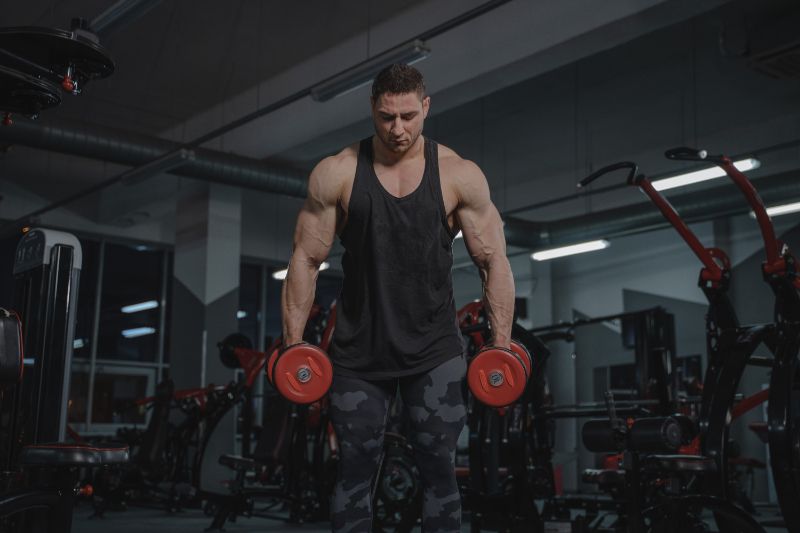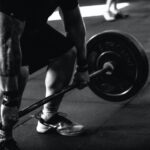
To many, it’s merely an activity they see at the gym or on TV during the Olympic Games. However, weight lifting, also called weight training, is more than a recreational or competitive sport.
It’s a rigorous discipline that uses resistance to build muscle mass and invoke muscular contraction. This contraction leads to an increase in strength, the endurance of muscles, and the development of lean muscle mass.
Table of Contents (click to expand)
Understanding Weight Lifting
Weight lifting is an exercise modality that involves lifting or pushing weights, whether small dumbbells, large barbells, or weight machines. When lifting weights, muscles contract to overcome gravity and move the weight. This process results in muscle hypertrophy and the development of lean muscle mass.
Weight training is an excellent way to improve overall health and fitness. It can aid in fat loss, improve metabolic rate, and contribute to better physical function and overall health. But it’s not just about moving weights around. To be effective and safe, weight training routine and lifting requires a high level of precision and the execution of proper form and technique.
Related: What Does Lifting Weights Do?
The History of Weight Lifting
Weight lifting can be traced back to the ancient Greeks, where it was a component of military training. Over time, weightlifting became a competitive sport, becoming an integral part of the Olympic Games. Today, the modern sport of weightlifting, known as Olympic weightlifting, is governed by the International Weightlifting Federation.
The evolution of competitive weightlifting and lifting over the centuries has incorporated new techniques and equipment, making it a more refined and nuanced discipline than ever before.
Fundamentals of Weight Lifting
Understanding the fundamentals of weight lifting is essential to practice this exercise effectively and safely. Strength and resistance training principles often overlap with weight lifting, yet each has unique aspects.
In most strength training exercises, the focus is on lifting heavier weights with fewer repetitions. The aim is to increase muscular strength and muscle size. On the other hand, resistance training can involve using lighter weights or bodyweight exercises with a higher number of repetitions, building muscular endurance. The use of resistance bands is also a common element in resistance training.
Whether using free weights, weight machines, or resistance bands, it’s crucial to maintain proper form. This ensures the targeted muscle groups are worked effectively and helps prevent injury.
It’s important to understand that the exact weight might not work for every exercise or muscle group, so adjustments should be made as necessary. Feeling muscle fatigue towards the end of a set is a typical part of the process, but if you can’t maintain proper form, it’s a sign the weight is too heavy.
Different Forms of Weight Lifting
There are many different forms of weight lifting, each offering health benefits too. Free weights, such as dumbbells, barbells, and kettlebells, are perhaps the most versatile form of weight lifting. Free weights require more balance and coordination than machines, which can lead to a more comprehensive workout.
Weight machines provide a safer, more controlled environment for weight lifting. These machines are designed to isolate specific muscle groups, helping to focus on improving muscular strength and hypertrophy in a particular area. This can be particularly beneficial for beginners or those with specific training goals.
Finally, bodyweight exercises offer a convenient and flexible form of weight lifting that can be done anywhere, anytime. These exercises use your body weight as resistance, offering a practical way to build strength and lean muscle mass without needing equipment.
Related: How to Drink Kombucha for Weight Loss
Basic Weight Training Exercises
Once you’ve got a handle on the basics of weight lifting, you can start incorporating more weight- training into your exercise routine. A few critical exercises can provide a comprehensive workout for your entire body.
One of the most common weight training exercises is the bench press, a compound exercise that targets the chest, shoulder, and tricep muscles. Other essential free-weight practices include the squat and the deadlift, which work multiple major muscle groups, including the quadriceps, hamstrings, glutes, and back muscles.
Classic exercises include the leg press and the lat pulldown on the machine side. The leg press targets your lower body, specifically your quadriceps, hamstrings, and glutes. On the other hand, the lat pulldown is a popular exercise for strengthening the muscles in your back, specifically your latissimus dorsi.
Benefits of Weight Lifting
The benefits of weight lifting extend far beyond the visible increase in muscle size. Regular weight lifting can help reduce body fat, enhance bone density, gain muscle, and improve mental health.
Lifting weights is also linked to improved heart health, such as lower blood pressure and a healthier cholesterol profile. It’s also associated with better sleep quality and enhanced cognitive function. More broadly, lifting weights can improve physical strength and function, making everyday activities easier.
Moreover, weightlifting can be a confidence-boosting activity. Seeing your progress over time, whether that’s lifting a heavier weight, doing more repetitions, or noticing changes in your body’s strength and appearance, a strength training exercise can provide a powerful psychological boost.
Risks and Misconceptions about Weight Lifting
Despite its numerous health and fitness benefits, weightlifting does have risks, mainly when done improperly. Injuries can occur from lifting too heavy too soon, not using the correct form, or not allowing sufficient rest time between training sessions.
It’s important to debunk some common misconceptions about weightlifting. For instance, many believe weightlifting is only for bodybuilders or athletes. In truth, weightlifting can be beneficial for everyone, regardless of age, gender, or fitness level. It can be tailored to help meet various health and fitness goals, from weight loss to improved athletic performance.
Another common misconception is that lifting weights will make women overly muscular. In reality, women typically don’t produce as much testosterone, a hormone that contributes to muscle size, as men. Therefore, women are more likely to develop a toned appearance than a bulky one when lifting weights.
Related: Why am I so hungry after lifting weights?
How to Get Started with Weight Lifting
Starting a weightlifting routine can feel intimidating, but it doesn’t have to be. It’s important to start slow, learn proper form, and gradually increase the weight and intensity of your workouts.
Personal trainers can provide tailored guidance and advice to help you start weightlifting. Online resources, such as video tutorials or guides from reputable fitness and sports medicine organizations, can also be helpful.
Before starting a weightlifting routine, it’s essential to warm up properly. This could involve light aerobic activity, such as a brisk walk or jog, followed by dynamic stretches that mimic the weightlifting movements you’ll be doing.
Advanced Weight Training Techniques
Once you’ve mastered the basics, you may want to explore more advanced weight training techniques. These can help to challenge your body in new ways and keep your workouts interesting.
Olympic weightlifting, for example, is a form of weightlifting that requires a high level of skill and power. It involves two main lifts: the snatch and the clean and jerk. Both charges require the athlete to lift a barbell from the floor to overhead in one or two quick movements. These lifts simultaneously work for multiple muscle groups and require high coordination, balance, and strength.
Keep in mind that advanced techniques like these should be learned under the supervision of a qualified coach or trainer. They can ensure that you’re performing the movements safely and effectively.
Related: What to Eat After Lifting Weights
Frequently Asked Questions About Weight Lifting
What is Considered Weight Lifting?
Weight lifting, or resistance or strength training, involves resistance to induce muscular contraction. This resistance can come from free weights like dumbbells and barbells, weight machines, or even your body weight. The goal is to lift weights or push the importance of working for various muscle groups in the body, increasing muscle size, strength, and endurance.
What is the Purpose of Weight Lifting?
The primary purpose of weight lifting is to increase muscular strength and hypertrophy (the increase in muscle size). However, the benefits extend far beyond that. Regular weight lifting can improve overall physical fitness, enhance bone density build muscle, boost metabolic rate, aid in weight management, and even improve mental health. Additionally, it can enhance performance in other physical activities and sports, making it a valuable addition to any fitness regimen.
Does Lifting Weights Burn Fat?
Yes, lifting weights can undoubtedly contribute to fat loss. Although cardiovascular exercise is often associated with burning calories and fat, weight lifting also plays a critical role. Lifting weights can boost your metabolic rate, increasing the calories you burn at rest.
This is because muscle is metabolically active tissue. The more muscle you have, the more calories you burn, even when you’re not exercising. Furthermore, weightlifting workouts can lead to “afterburn” – a state in which your body continues to burn calories at an elevated rate after training. Therefore, weight lifting and a healthy diet can help burn fat and aid in weight loss.
Related: How to Start Lifting Weights
Conclusion
In essence, weight lifting is a versatile and practical form of exercise that can provide numerous health and fitness benefits. By understanding its fundamentals and progressively challenging yourself, you can reap the rewards of improved strength, lean muscle mass, and overall health and well-being.
Consistency, consistent training, proper form, and a balanced routine are critical to successful weight lifting. It’s also essential to listen to your body and give it ample rest and nutrition to recover and grow stronger. With time and dedication, weight lifting can become a rewarding part of your lifestyle that helps you achieve your health and fitness goals.





































